Cannabis growing FAQ
Grow Bags for Growing Cannabis | The Complete Guide
Published
7 months agoon
By
admin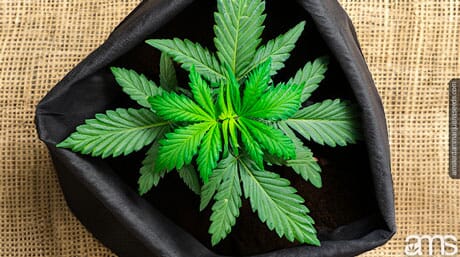
Introduction
Welcome to the ultimate guide on using grow bags for growing cannabis. Whether you’re a seasoned gardener or a cannabis enthusiast looking to cultivate your favorite strain, grow bags offer a versatile and efficient way to nurture healthy cannabis plants. In this article, we’ll answer the most frequently asked questions about grow bags for cannabis cultivation and provide valuable insights into their advantages, disadvantages, and optimal usage. Let’s dive in!
Are Grow Bags Better Than Buckets?
Grow bags have become increasingly popular among cannabis growers due to their numerous benefits. Unlike traditional buckets, grow bags offer superior aeration, root pruning, and drainage, creating a healthier environment for cannabis plants. The porous fabric of grow bags allows excess water to escape, preventing overwatering and root rot, which is a common issue with buckets. Additionally, grow bags are space-efficient and easy to store, making them a practical choice for indoor and outdoor cultivation.
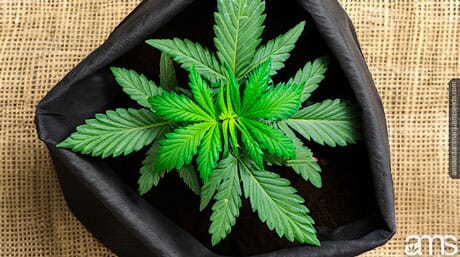
The Pros and Cons of Growing Bags
Like any gardening method, grow bags have their advantages and disadvantages. Let’s explore them in detail:
Pros:
- Aeration: Grow bags promote better air circulation, preventing root circling and promoting healthier root systems.
- Drainage: The breathable fabric ensures proper drainage, reducing the risk of overwatering.
- Prevents Overheating: Grow bags release excess heat, keeping the root zone cooler during hot weather.
- Space-Efficient: They can be easily arranged in tight spaces, maximizing planting area.
- Reusable: Quality grow bags can be washed and reused for multiple growing seasons.
Cons:
- Susceptibility to Drying: Grow bags may dry out more quickly than containers, necessitating more frequent watering in certain environments.
- Durability: Lower-quality grow bags may tear or degrade over time.
- Stability: The soft-sided nature of grow bags can be less stable than rigid containers.
What Size Grow Bag is Best for Indoor Cannabis?
The ideal size of a grow bag for indoor cannabis depends on the space available and the desired plant size. For most indoor growers, a 5-gallon grow bag is a popular choice. This size provides ample space for the roots to spread and promotes healthy growth without taking up excessive room. However, if you have limited space, consider using 3-gallon grow bags for smaller cannabis plants.
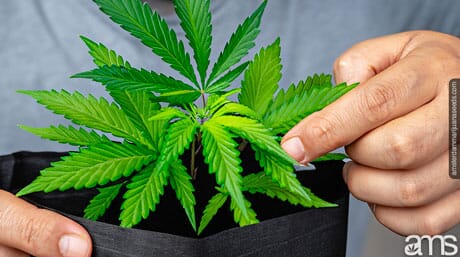
Do Bigger Grow Bags Mean Bigger Buds?
While the size of grow bags can influence plant growth, it’s essential to understand that bigger bags alone won’t guarantee bigger buds. The health and yield of cannabis plants depend on various factors, including light, nutrients, genetics, and environmental conditions. Adequate lighting, proper nutrition, and careful cultivation techniques play a more significant role in bud development.
Is Grow Bags Better for Roots?
Yes, grow bags are generally better for root health compared to traditional containers. The fabric material of grow bags allows air to reach the root zone, encouraging air pruning. When roots reach the fabric’s edge, they encounter air, causing the tips to desiccate and branching to occur. This process prevents root circling, promotes a more extensive root system, and enhances nutrient uptake.
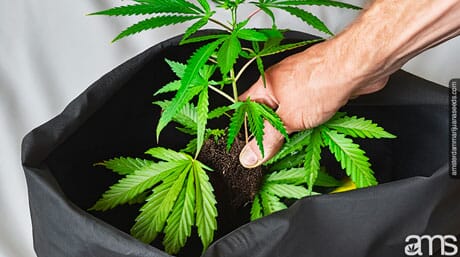
The Disadvantages of Using Grow Bags
While grow bags offer several advantages, it’s crucial to be aware of potential drawbacks:
- Frequent Watering: Grow bags may require more frequent watering compared to conventional containers due to their superior drainage and aeration.
- Durability: Lower-quality grow bags may tear or degrade over time, especially if reused for multiple seasons.
- Stability: Soft-sided grow bags may be less stable than rigid containers, requiring additional support in windy conditions.
Are Grow Bags Better Than Compost?
Grow bags and compost serve different purposes in cannabis cultivation. Grow bags are containers made of breathable fabric that promote healthier root systems through improved aeration and drainage. Compost, on the other hand, is a nutrient-rich organic material that enhances soil quality and fertility. While grow bags provide a conducive environment for roots, compost enriches the soil and provides essential nutrients for plant growth. When used together, grow bags and compost can complement each other, resulting in optimal cannabis growth.
Should I Use Potting Soil in Grow Bags?
Using high-quality potting soil is recommended when cultivating cannabis in grow bags. Look for well-balanced potting mixes that include a blend of peat moss, vermiculite, and perlite. These components provide essential nutrients, promote proper drainage, and offer the right level of aeration for healthy root development. Avoid using garden soil in grow bags, as it may lack the necessary properties and lead to poor plant growth.
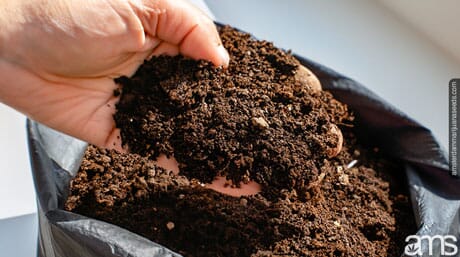
Are Grow Bags Better Than Plastic?
Grow bags and plastic containers cater to different gardening needs. While plastic containers are durable and stable, they lack the superior drainage and aeration of grow bags. The non-porous nature of plastic can lead to overwatering and root issues. Grow bags, with their breathable fabric, offer improved air circulation and prevent waterlogged roots. However, both options have their benefits and can be used successfully for cannabis cultivation based on personal preferences and growing conditions.
How Long Can a Grow Bag Last?
The lifespan of a grow bag varies depending on its quality and usage. High-quality grow bags made from sturdy fabric can last for several growing seasons if properly cared for and stored during the off-season. Regularly clean the grow bags after each use, allow them to dry completely, and store them in a cool, dry place to extend their lifespan.
Should I Put Holes in My Grow Bag?
Grow bags are designed with pre-made drainage holes to allow excess water to escape, preventing overwatering. However, in certain cases, additional holes may be necessary to ensure proper drainage, especially if you notice water pooling at the bottom of the bag. Use a sharp object to make small drainage holes at the bottom, ensuring they do not compromise the structural integrity of the bag.

Should I Put Rocks in the Bottom of My Grow Bag?
Adding rocks or stones at the bottom of grow bags is unnecessary and may lead to drainage issues. The practice was once believed to improve drainage, but it can create a false water table, leading to waterlogged soil at the root level. For optimal results, rely on the natural drainage provided by the grow bag’s fabric and ensure the bag has adequate drainage holes.
Do Grow Bags Get Too Hot?
Grow bags are designed to release excess heat, preventing the root zone from getting too hot. The breathable fabric allows air to circulate around the root system, maintaining a more stable temperature. However, in extremely hot climates, grow bags can still get warm. To mitigate this, place the grow bags in a shaded area or use mulch to insulate the root zone and retain moisture.
Do Grow Bags Need Perlite?
While perlite can enhance the drainage and aeration of potting soil, it is not essential for grow bags. Grow bags already provide excellent aeration and drainage due to their fabric material. However, if you prefer a looser soil mix, you can add perlite to your potting soil before filling the grow bags.
When Should You Stop Using a Grow Bag?
Grow bags are reusable and can last for multiple growing seasons. However, over time, the fabric may become worn or damaged. Consider replacing the grow bags if you notice significant tears or degradation that may compromise the root zone’s health. Regularly inspect the grow bags after each growing season to assess their condition.

What Can I Use Instead of Grow Bags?
If grow bags are not available, several alternative containers can be used for cannabis cultivation, including:
- Plastic Nursery Pots: Similar to grow bags but made of plastic, these pots provide good drainage.
- Fabric Pots: Fabric containers with properties similar to grow bags, promoting aeration and root pruning.
- Five-Gallon Buckets: While not as efficient as grow bags, buckets can still be used for cannabis cultivation with proper drainage and aeration.
Can You Use Grow Bags Twice?
Yes, grow bags can be reused for multiple growing seasons with proper care and maintenance. After each growing season, clean the grow bags thoroughly, allow them to dry completely, and store them in a cool, dry location. Inspect the grow bags for any signs of damage or wear before using them again.
What is the Best Size Grow Bag?
The best size grow bag for cannabis depends on several factors, including the available space, plant size, and growing environment. For most indoor growers, 5-gallon grow bags are a popular choice, offering ample room for root growth without taking up excessive space. Outdoor growers may opt for larger sizes, such as 10-gallon grow bags, for larger plants or increased root space.
Do Grow Bags Need Trays?
Grow bags typically do not require trays, as their superior drainage prevents water from pooling at the bottom. However, if you want to protect the surface beneath the grow bags or prefer a neater appearance, you can use trays or saucers.
How Many Plants Can You Put in a Grow Bag?
The number of plants per grow bag depends on the bag’s size and the intended plant size. In a 5-gallon grow bag, one healthy cannabis plant is typically recommended. For smaller cannabis plants or those with shorter growth periods, you may consider growing two plants in a 5-gallon grow bag. However, overcrowding should be avoided, as it can lead to competition for nutrients and space.
Can I Bottom Water in a Grow Bag?
While bottom watering can be done in certain situations, it is not the most efficient method for grow bags. Due to the breathable fabric, water may escape through the bottom, leading to uneven watering and potential overwatering. Instead, opt for top watering, allowing water to evenly disperse throughout the growing medium and promote even root growth.
Conclusion
Grow bags offer a fantastic option for cultivating healthy and thriving cannabis plants. With their excellent drainage, aeration, and root-friendly environment, they can help you achieve successful cannabis cultivation both indoors and outdoors. Consider the advantages and disadvantages of grow bags, select the appropriate size for your needs, and follow best practices to grow vigorous cannabis plants in these versatile containers. Happy gardening!
Frequently Asked Questions
Yes, grow bags are suitable for both indoor and outdoor cannabis cultivation.
Watering frequency varies depending on environmental conditions. Check the soil moisture regularly and water when the top inch feels dry.
Yes, DIY grow bags can be made from breathable fabric and are a cost-effective option.
Ensure proper spacing between plants and provide adequate support for taller cannabis varieties.
Regularly monitor water and nutrient levels, prune as needed, and protect the plants from pests and diseases.
Rinse the grow bags with water, scrub away any debris, and let them air dry before storing.
You may like
-


Pot prohibition costs Florida at least $200 million per year
-


Union’s initiative to organize Oregon marijuana workers nears ballot
-


Cannabis and Mental Health: Recent Research and Implications
-


Why You Shouldn’t Vote for Kamala Harris Just Because of Her Position on Cannabis- Banana in the Tailpipe, Again?
-


Your Trusted Amsterdam Seed Bank – Powered by Mother Nature, Breeding since 1996
-


Sam Hilliard’s clutch homer, Ezequiel Tovar’s walk-off send Rockies to win over Red Sox in 12 innings
Cannabis growing FAQ
Choosing Cannabis Strains: Tips for Successful Cultivation
Published
2 weeks agoon
July 16, 2024By
admin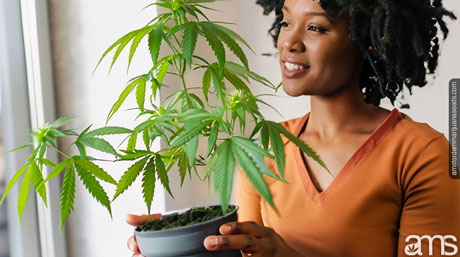
“Choosing Cannabis Strains: Tips for Successful Cultivation”
In this article you will find answers to following questions: how do I choose cannabis strains?, what are some cannabis cultivation tips? where can I find a strain selection guide? which strains are the best for cultivation? how do I set cultivation goals? what is the importance of understanding cannabis genetics? what are the differences between indoor and outdoor strains?, what should I consider when it comes to strain yield?
In the sprawling world of cannabis cultivation, the vast range of strains available is genuinely mind-boggling. Whether you’ve just decided to buy cannabis seeds for the first time, or you’re a seasoned grower contemplating your next strain, understanding the factors to consider when choosing cannabis strains is a critical step. This guide provides a comprehensive outline of the key considerations to keep in mind, ensuring you make informed decisions about your cannabis growing endeavors.
We start with a fundamental yet often overlooked step: understanding your cultivation goals. Ask yourself, what do you aim to achieve with your cannabis growing? Are you aiming for high yields, specific flavors, or a particular type of effect? Answering these questions is central to the process of strain selection. It’s why we consider “cultivation goal setting” an essential part of choosing the right cannabis seeds.
For instance, you may decide to purchase marijuana seeds to cultivate strains rich in CBD for their potential health benefits. Alternatively, if you’re interested in the recreational aspect, your focus might be on strains with high THC content. Your cultivation goals will influence not only which marijuana seeds you buy but also how you approach the entire cannabis growing process.
Next on the list of cannabis cultivation tips is understanding cannabis genetics. Just as in any form of agriculture, the genetic makeup of the cannabis seeds you choose to plant plays a significant role in the results you achieve. Variations in genetics can result in differences in plant size, growth speed, resistance to diseases, and the quality of the final product. When buying cannabis seeds, it’s crucial to choose reputable suppliers who provide detailed information about the strain’s genetics.
One central aspect of understanding cannabis genetics is the difference between Indica, Sativa, and Hybrid strains. Indica strains, known for their physical sedating effects, typically grow shorter and bushier and have a faster flowering time, making them suitable for indoor cultivation. In contrast, Sativa strains, associated with uplifting cerebral effects, tend to be taller and have a longer flowering period, making them better suited for outdoor cultivation. Hybrid strains offer a combination of both Indica and Sativa traits, allowing growers to benefit from the best characteristics. For marijuana seeds that promote impressive plant growth, you can visit our Cannabis Seeds For Tall Plants page.
This brings us to our next point: deciding between indoor vs outdoor strains. When choosing cannabis strains, consider the growing conditions you can provide. Indoor growing provides controlled conditions, making it ideal for strains that require specific light, temperature, or humidity levels. Outdoor growing is generally cheaper and can produce more substantial yields, but the strains must be hardy and adaptable to your local climate. Therefore, understanding cannabis genetics is vital to select the best strains for cultivation in your specific environment.

Next up in our cannabis cultivation tips is considering strain yield. Yield refers to the amount of cannabis you can harvest from a plant. When you buy cannabis seeds , pay attention to the estimated yield. However, keep in mind that these are estimates and can be influenced by the growing conditions. Yield is an important consideration, especially for commercial growers, as it directly affects profitability.
It’s not just about how much you can grow, but also the quality of the product. This is where we delve into the world of grower’s strain considerations. The best strains for cultivation are those that not only meet your yield and growth environment requirements but also produce a high-quality product. This includes factors such as potency, flavor, and aroma. These elements are influenced by the strain’s genetics and growing conditions.
Lastly, but certainly not least, is understanding the importance of cannabis growth conditions. Even the best strains for cultivation won’t thrive if their specific growth conditions are not met. This includes factors such as light, temperature, water, nutrients, and pH levels. It’s also worth considering whether you’ll be growing in soil or using a hydroponic system, as this can influence the choice of strains.
In the end, the most crucial factor in choosing the right strain for your cultivation goals is knowledge. Educate yourself about cannabis genetics, growth conditions, and your specific goals for your cannabis growing journey. Take your time, plan, do your research before you buy cannabis seeds, and always aim to improve your growing skills. Remember, the world of cannabis cultivation is full of surprises and challenges, but also great rewards.
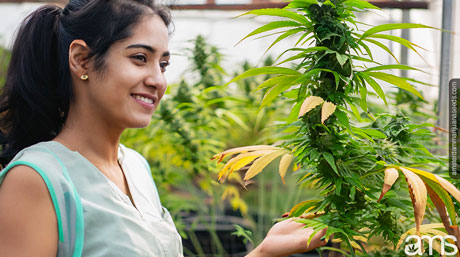
Focusing on the complexity of choosing cannabis strains and delving deeper into the art of cannabis growing. Remember, we are on this journey together, and my aim is to provide you with invaluable insights to aid you in achieving your cultivation goals.
Whether you’re just starting to dip your toes into the world of cannabis growing or you’re a seasoned cultivator, your mission should always be to improve and refine your cultivation techniques. This ties back to our point about cultivation goal setting. Are you growing for personal use, or are you aiming to become a commercial producer? Answering this question is crucial as it directly influences the type of cannabis seeds you should buy.
For example, if you’re growing marijuana for personal use, your top priority may be the strain’s taste and effect. In this case, a strain like the Purple Haze, known for its sweet, earthy flavors and uplifting effects, may be an excellent choice. Conversely, if your goal is commercial cultivation, you’ll likely be more concerned about yield and growth speed. You might want to consider a strain like Critical Mass, renowned for its high yield and quick flowering time.
Now, the concept of strain selection can be daunting, given the plethora of cannabis seeds available on the market. When you’re choosing cannabis strains, it’s crucial to consider the source of your seeds. Buying cannabis seeds from a reputable source ensures that you’re getting what you’re paying for. This is why understanding cannabis genetics and the breeder’s reputation is key to making a wise decision.
From my personal experience in cannabis growing, I’ve found that each strain has its unique “personality.” For example, the Amnesia Haze strain has a reputation for being a bit difficult to grow, especially for beginners. It requires very specific growing conditions, including a warm, sunny climate and a carefully balanced nutrient mix. On the other hand, strains like the Northern Lights are known to be more forgiving and versatile, making them suitable for beginners. Understanding these nuances is vital when choosing cannabis strains.
One of the most fundamental cannabis cultivation tips I can give is to educate yourself about the specific needs of your chosen strain. This involves a deep dive into the world of cannabis growth conditions. A key element of cannabis growing is the delicate balance of light, temperature, humidity, and nutrients. These factors, collectively known as the growing environment, play a significant role in the success of your crop.
Take, for instance, a classic strain like Blue Dream. It is beloved for its balanced full-body relaxation and cerebral inv igoration. Blue Dream prefers a Mediterranean-like climate and requires careful attention to nutrient feeding, but rewards the grower with a high yield.
On the other hand, when it comes to indoor vs outdoor strains, it’s important to consider your available resources and constraints. Indoor cultivation provides you with control over the growth conditions but can be more costly due to the need for lighting, ventilation systems, and more. Outdoor growing is less predictable, as it relies heavily on natural conditions. However, it can also yield more bountiful harvests if the strains chosen are suited to the local climate and conditions. A strain like Durban Poison, for instance, thrives in sunny, outdoor environments and could be an excellent choice for outdoor growers.
Let’s now shift our focus to strain yield considerations. Your chosen strain’s potential yield should align with your cultivation goals. When choosing cannabis strains for commercial cultivation, strains known for their high yield are your best bet. Strains like Big Bud and Critical Kush are known in the cannabis growing community for their impressive yields.
Growing marijuana is an art, a science, and a labor of love. It involves a deep understanding of cannabis genetics, meticulous care in maintaining the right growth conditions, and strategic planning to align with your cultivation goals. Whether you’re a novice grower buying cannabis seeds for the first time or a seasoned cultivator exploring new strains, keeping these considerations in mind will help you choose the right strains for your cultivation goals. And remember, every new growth cycle is an opportunity to learn and refine your cannabis growing techniques.
As we delve further into the complex world of cannabis growing, it’s essential to reiterate the importance of making informed decisions when you buy cannabis seeds. These decisions have a significant impact on the success of your cultivation endeavors, be it for personal or commercial purposes.
Another pivotal factor when choosing cannabis strains is considering the medicinal properties of the strains. If your goal is medicinal marijuana cultivation, focusing on CBD-rich cannabis seeds is the way to go. Strains such as Charlotte’s Web or ACDC, known for their high CBD and low THC content, could be a fantastic choice for those looking to leverage the potential health benefits of cannabis without the psychoactive effects.
It’s important to remember that, similar to other plants, cannabis is subject to diseases and pests. Different strains have varying levels of resistance to these threats, which is another key aspect of understanding cannabis genetics. For instance, some cannabis seeds are bred to resist mold and mildew, like the Super Silver Haze strain. Grower’s strain considerations like these are vital to ensure a healthy, thriving crop.
Moreover, your growing marijuana experience can also be influenced by the length of the strain’s flowering period. In the realm of cannabis cultivation, time is money, particularly for commercial growers. Strains with short flowering times allow for more harvests within the same timeframe. The Indica-dominant strain, Afghan Kush, for instance, has a relatively short flowering time of about 7-8 weeks.
As we dive deeper into cannabis cultivation tips, let’s talk about something that’s often overlooked by novice growers: plant training techniques. Techniques like Low-Stress Training (LST), High-Stress Training (HST), Screen of Green (SCROG), and Sea of Green (SOG) can significantly improve the yield and overall health of your plants. They work by exposing more of the plant’s surface area to light, leading to more vigorous growth.
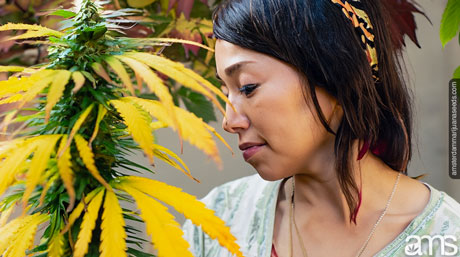
Indoor vs outdoor strains have different preferences when it comes to their growing environment. As mentioned earlier, choosing between indoor and outdoor cultivation depends on the resources at your disposal and the specific needs of the strains you’re growing.
For example, growing marijuana outdoors often results in larger plants, as the plants have more room to stretch out and grow. Strains like the Sativa-dominant Amnesia Trance are well-suited for outdoor cultivation, given their preference for plenty of sunshine and their resilience to environmental changes.
On the other hand, indoor growing offers a higher degree of control over the environment. This control can lead to a more consistent, high-quality product but also requires a more hands-on approach. The Indica-dominant strain, White Widow, is known to thrive in indoor environments, making it a popular choice for indoor cultivators.
A deep understanding of cannabis growth conditions is necessary to successfully grow marijuana, whether indoors or outdoors. Ensuring that your plants have the correct balance of light, temperature, humidity, and nutrients can make the difference between a bountiful harvest and a disappointing yield.
Finally, never underestimate the importance of patience and continual learning in the world of cannabis cultivation. Growing marijuana is a journey that requires a lot of trial and error. But remember, each challenge presents an opportunity to learn and grow as a cultivator.
When you buy cannabis seeds and start your growing journey, you’re not just growing plants; you’re cultivating skills, knowledge, and patience. Keep learning, keep experimenting, and remember to enjoy the process.
Continuing on our exploration of cannabis growing, we now turn to some advanced tips and techniques that can help fine-tune your cultivation process and further optimize your results. Remember, when you are looking to buy cannabis seeds, it is essential to consider not just the strain’s characteristics but also your own cultivation capabilities and goals.
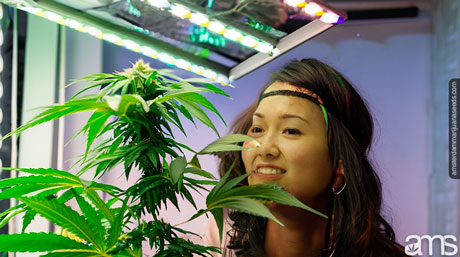
One of the most critical cannabis cultivation tips I can share is the importance of the vegetative and flowering stages in cannabis growth. Each stage has unique nutrient requirements, and understanding these can significantly impact the health and yield of your plants.
During the vegetative stage, cannabis plants require high levels of nitrogen and ample amounts of phosphorous and potassium. This stage is all about green, leafy growth and developing a robust plant structure. Strains like the Super Skunk are known for their vigorous vegetative growth, making them a great choice for growers wanting a short growth cycle.
As your plants transition into the flowering stage, the nutrient needs shift. High levels of phosphorous and potassium, along with lower amounts of nitrogen, are needed to support bud development. Strains like the Haze Berry are known for their abundant and flavorful buds when provided with the right nutrients during the flowering stage.
One must also consider strain yield considerations. The yield of a cannabis strain is the weight of the dried flowers that the plant produces. Some strains, like the renowned Critical, are bred specifically for high yield production and can produce an impressive amount of high-quality bud. However, remember that a high-yielding strain also requires careful management and the right growth conditions to achieve its full potential.
The topic of indoor vs outdoor strains comes up frequently in the context of yield, as the growing environment can significantly influence the yield of a cannabis plant. Indoor growers often use techniques like plant training and specialized lighting schedules to maximize their yield. Growing marijuana outdoors, in contrast, allows the plants to take advantage of natural sunlight and potentially grow into much larger plants, potentially offering a larger yield.
A significant part of cannabis growing involves managing potential threats to your plants, like pests and diseases. Strains differ in their resistance to these challenges, so it’s wise to consider these factors when choosing cannabis strains. For example, the Gorilla Glue strain has a reputation for its resistance to pests, while the Pineapple Express strain is known for its resistance to diseases.
One of the often overlooked cannabis cultivation tips involves the harvest time. The harvest time can significantly influence the effects of your cannabis. Harvesting earlier can result in a more uplifting effect, while harvesting later can lead to a more relaxing effect. Understanding the desired effects can guide your harvest decisions.
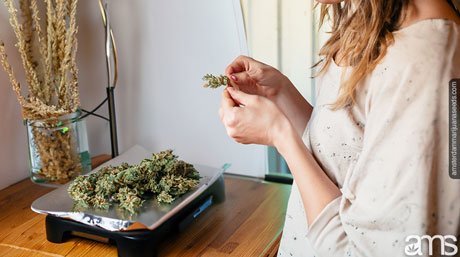
In conclusion, the art of growing marijuana involves a series of critical decisions, starting from the moment you buy cannabis seeds, all the way to harvest. Every step along the way presents opportunities to optimize your results and achieve your cultivation goals. So keep these considerations in mind, continue to expand your understanding of cannabis genetics and growth conditions, and enjoy the rewarding journey that is cannabis cultivation.
In this final section of our comprehensive guide on choosing the right strain for your cultivation goals, we focus on the post-harvest considerations. From curing to storing your cannabis, each step plays a crucial role in preserving the quality and potency of your yield. When you set out to buy cannabis seeds, remember that the journey doesn’t end with harvesting.
After harvesting, curing is the next critical step. Curing your cannabis properly can significantly enhance its flavor and potency and also helps to prevent the growth of mold during storage. For strains like the Afgooey, which are known for their unique, complex flavors, proper curing can make all the difference.
When it comes to storing your cannabis, an airtight container in a cool, dark, and dry place is the best way to maintain its quality over time. Excessive heat and light can degrade cannabinoids and terpenes, leading to a loss in potency and flavor. Therefore, even for the best strains for cultivation, poor storage can result in an inferior product.
Moreover, you must always bear in mind the legal considerations associated with cannabis cultivation. Legal parameters can vary widely depending on your location, so always ensure you are compliant with local laws and regulations when you set out to buy cannabis seeds or engage in cannabis growing.
Lastly, always remember that every grower’s journey is unique. Your choice when buying cannabis seeds should align with your personal cultivation goals, resources, and preferences. From understanding cannabis genetics to choosing between indoor vs outdoor strains, to considering strain yield considerations, your path in the world of cannabis cultivation will be an exciting journey of learning and discovery.
Now, with a multitude of cannabis cultivation tips at your fingertips, you are better equipped to make informed decisions about your cannabis growing endeavors. You can navigate the nuances of choosing cannabis strains, understand your grower’s strain considerations, and anticipate the growth conditions required for thriving plants.
In summary, growing marijuana is both a science and an art, full of opportunities for personal growth and exploration. So, take your time, do your research, and make sure you enjoy the process. Whether you are a seasoned grower looking to refine your techniques, or a novice eager to delve into the world of cannabis cultivation, remember that success often comes through trial, error, and, most importantly, patience.
Thank you for joining me on this journey, and I hope this guide has been enlightening and helpful in achieving your cultivation goals. Good luck, and happy growing!
Cannabis growing FAQ
Hash vs. Weed: A Comprehensive Comparison
Published
5 months agoon
March 7, 2024By
admin
By: Juan Sebastian Chaves Gil
In the world of cannabis, the choice between hash and weed has been a constant subject of debate among consumers, experts, and legislators. Both forms of cannabis have their own distinctive characteristics, effects, and methods of consumption, leading to the question: which is better?
Origins and Production Processes:
Hash, also known as hashish, is produced by separating and collecting trichomes, the resin glands of the cannabis plant. These trichomes are pressed to form blocks or converted into powder, resulting in a highly concentrated product. On the other hand, weed, also called marijuana, consists of the dried and cured flowers of the cannabis plant.
Potency and Concentration:
One of the highlights of hashish is its higher concentration of cannabinoids compared to weed. The production process of hashish allows for a more efficient extraction of the active compounds, with a THC content of around 40%, resulting in a more potent experience for the user. However, this higher potency also carries the risk of excessive consumption, which can lead to unwanted effects.
Cannabis, on the other hand, generally contains lower levels of cannabinoids than hashish, with a bud containing between 10% and 20% THC. This can provide a softer, more controlled experience for those who wish to avoid the intense effects associated with hashish.
Variety of Flavors and Aromas:
Weed is characterised by its wide variety of strains, each with a unique flavour and aroma profile. Consumers of weed can enjoy a wide range of sensory experiences, from citrus and earthy notes to sweeter or spicier flavours. Hash, on the other hand, tends to have a more robust and earthy flavour, as it is composed primarily of trichomes, which contain the plant’s aromatic compounds.
Methods of Consumption:
Both forms of cannabis offer various options for consumption. Weed can be smoked in joints, pipes, vaporizers, or even consumed in edibles. Hash, although often smoked, can also be inhaled using specialized vaporizers or mixed with tobacco.
Edibles for a Delicious High
Hash, similar to marijuana, can also be used for medical purposes to alleviate ailments such as nausea, lack of appetite, stress, and fatigue. Hash oil can also be used for patients that have problems with their breathing and don’t want to smoke it, and just like marijuana, hash can also be turned into edibles for a delicious high.
Since one is used to create the other, it only makes sense that marijuana and hash are going to share a lot of similarities. But once the production process has begun and marijuana has started being turned into hash, there are more differences than similarities between the two. And the one that users will find most noticeable is that hash is much more potent and therefore, results in a much more intense high.
Legal and Social Considerations:
Laws and social perceptions regarding cannabis consumption vary significantly worldwide. While some places have legalized or decriminalized the recreational or medicinal use of weed, hash often faces greater stigmatization and legal restrictions.
The choice between hash and weed largely depends on individual preferences, tolerance, and consumer goals. Weed offers a variety of flavors and a less intense experience, while hash provides a concentrated potency appreciated by those seeking a stronger effect. Ultimately, the best choice is subjective and should take into account personal, legal, and social factors.
Cannabis growing FAQ
Managing Excessive Temperatures When Growing Cannabis: Tips and Techniques
Published
10 months agoon
October 10, 2023By
admin
Introduction
Growing cannabis can be a rewarding experience, but it also comes with its share of challenges, especially when it comes to managing temperature extremes. Whether you’re facing scorching outdoor temperatures or dealing with heat buildup in your grow room, understanding how to protect your cannabis plants from excessive heat is crucial. As an experienced cannabis grower working with Amsterdam Marijuana Seeds, I’ve encountered and overcome various temperature-related obstacles. In this comprehensive guide, I’ll provide you with valuable insights on managing excessive temperatures and ensuring the health and vitality of your cannabis crops.

Is Too Much Sun Bad for Cannabis?
While cannabis plants love sunlight, excessive exposure to the intense sun can be detrimental. High temperatures and intense light can lead to heat stress and light burn, causing damage to the plant’s leaves and overall growth. To prevent this, consider providing partial shade during the hottest parts of the day or using light diffusing materials to protect your plants from excessive sun exposure.
How Hot is Too Hot for Cannabis?
Cannabis plants have a preferred temperature range of 70°F to 85°F (21°C to 29°C). When temperatures exceed this range, the risk of heat stress and potential damage to your plants significantly increases. Keep a close eye on the thermometer and intervene promptly if temperatures start to soar beyond the ideal range.
What Does an Overheated Cannabis Plant Look Like?
An overheated cannabis plant displays several distinctive signs. The leaves may appear droopy, wilted, or curled, and their edges may turn yellow or brown. Overheating can also cause stunted growth and give the plant an overall stressed and unhealthy appearance.
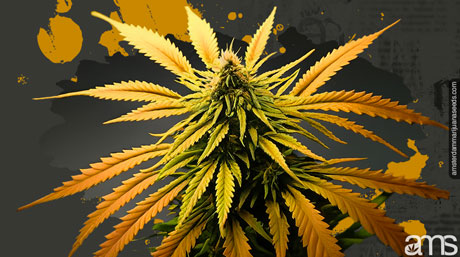
Does Heat Hurt Cannabis?
Yes, excessive heat can hurt cannabis plants. High temperatures can disrupt the plant’s metabolic processes, reduce nutrient uptake, and lead to wilting and leaf burn. If not addressed promptly, prolonged exposure to high heat can severely impact plant health and overall yield.
What Does Light Burn Look Like on Cannabis?
Light burn, also known as light stress, occurs when cannabis plants are exposed to intense light, particularly from high-powered artificial lighting systems. The affected leaves may show bleached or yellow areas, and the tips may appear burnt. Adjusting the light distance and intensity can prevent light burn.
What Are the Symptoms of High Temperature on Plants?
High temperatures can manifest in various ways, including wilting, drooping, leaf discoloration, and overall growth stunting. If the plant’s environment becomes excessively hot, its ability to take in nutrients and water may also be compromised.
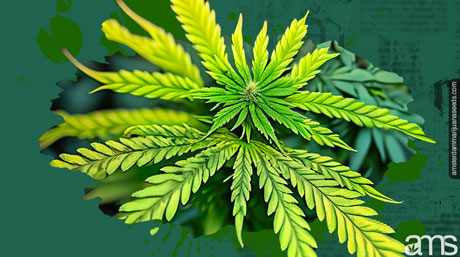
How Do You Tell if a Plant is Burned?
A burned plant will have visible signs of damage on its leaves, such as brown or yellow patches. The tips of the leaves may also appear burnt or crispy. Adjusting the growing conditions and providing appropriate care can aid the plant in recovering from burns.
| Visible Signs of Damage | Description |
|---|---|
| Brown or Yellow Patches on Leaves | Leaves show visible spots of brown or yellow discoloration. |
| Burnt or Crispy Leaf Tips | The tips of the leaves appear burnt or crispy. |
| Recovery Measures | Adjust growing conditions and provide appropriate care to aid the plant’s recovery from burns. |
Can a Plant Recover from Heat Stress?
Cannabis plants are resilient and can recover from heat stress if the issue is addressed promptly. Moving the plant to a cooler location, providing adequate hydration, and optimizing environmental conditions can help the plant bounce back from heat stress.
How Do You Save a Plant That Got Too Hot?
To save a plant that has experienced extreme heat, act swiftly and implement the following steps:
Move the plant to a cooler location with sufficient shade.
Ensure the plant is adequately watered, as heat stress can lead to dehydration.
Create a conducive environment by reducing temperatures and providing good airflow.
Monitor the plant closely for signs of improvement or further stress.
How Do Plants Keep Cool?
Plants employ various mechanisms to stay cool and regulate their internal temperature:
Transpiration: The process by which plants release water vapor through their stomata helps cool the plant.
Leaf Orientation: Some plants orient their leaves to reduce direct exposure to intense sunlight, minimizing heat absorption.
Root Systems: An efficient root system allows plants to draw water from deeper soil layers, mitigating the effects of heat stress.
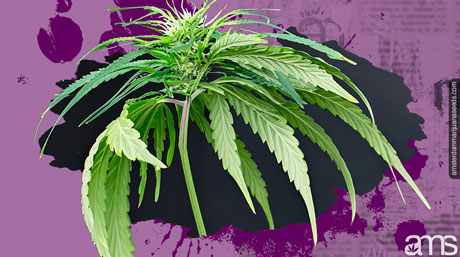
What are Four Ways to Prevent Heat Stress in Plants?
To prevent heat stress in cannabis plants, consider the following strategies:
Shade and Ventilation: Utilize shade cloth or other materials to protect plants from excessive sunlight during peak hours. Additionally, ensure proper ventilation to dissipate excess heat.
Watering Schedule: Maintain a consistent watering schedule, especially during hot weather, to keep the plants hydrated and healthy.
Mulching: Apply organic mulch around the base of plants to help retain soil moisture and regulate temperature.
Choosing Suitable Strains: Opt for cannabis strains that are more tolerant of higher temperatures, especially if you’re cultivating outdoors in a hot climate.
How Do Plants Protect Themselves from Heat?
Plants have evolved several defense mechanisms to protect themselves from heat stress:
Heat Shock Proteins (HSPs): These proteins are produced in response to stress and help the plant recover and maintain cellular integrity.
Antioxidants: Plants produce antioxidants to neutralize harmful free radicals generated during high-temperature stress.
Closing Stomata: In response to heat, plants may close their stomata to reduce water loss through transpiration.
How Do You Control Plant Temperature?
Controlling plant temperature involves careful management of the growing environment. Here are some effective ways to do so:
Use Temperature-Controlled Growing Spaces: In indoor settings, invest in equipment such as air conditioners, fans, and heaters to maintain optimal temperatures.
Shading and Ventilation: In outdoor settings, use shading materials and ensure adequate ventilation to regulate temperature.
Water Management: Proper watering practices can help moderate temperature fluctuations in the soil and improve overall plant health.

What Does Heat Stress Do to Buds?
Heat stress during the flowering phase can significantly impact bud development and quality. It may lead to foxtailing, a condition where the buds produce elongated, spiky calyxes, reducing overall bud density and potency.
How Hot is Too Hot for Flowering?
During the flowering phase, temperatures above 85°F (29°C) can adversely affect bud formation and potency. It’s essential to maintain moderate temperatures during this crucial stage to achieve optimal yields and high-quality buds.
Conclusion
As a cannabis grower, understanding how to manage excessive temperatures is essential for maintaining healthy, thriving plants. Whether you’re growing indoors or outdoors, implementing the right cooling strategies and prevention techniques will help you overcome heat-related challenges and achieve successful cannabis cultivation. By closely monitoring your plants, providing appropriate care, and optimizing the growing environment, you can ensure your cannabis crop thrives even in the face of extreme temperatures.
Frequently Asked Questions
Yes, air conditioners are an effective way to regulate temperature in indoor grow rooms, providing a comfortable environment for your cannabis plants.
It’s best to mist your plants early in the morning or late in the evening to avoid moisture-related issues during the hotter parts of the day.
Cannabis thrives in temperatures between 70°F to 85°F (21°C to 29°C) during the day and slightly cooler temperatures at night.
Yes, heat stress during the flowering phase can impact bud development, potentially leading to reduced potency and altered cannabinoid profiles.

Pot prohibition costs Florida at least $200 million per year

Union’s initiative to organize Oregon marijuana workers nears ballot

Cannabis and Mental Health: Recent Research and Implications

Why You Shouldn’t Vote for Kamala Harris Just Because of Her Position on Cannabis- Banana in the Tailpipe, Again?

Your Trusted Amsterdam Seed Bank – Powered by Mother Nature, Breeding since 1996

Sam Hilliard’s clutch homer, Ezequiel Tovar’s walk-off send Rockies to win over Red Sox in 12 innings

Keeler: Trevor Story returned to Denver, but it was Rockies fan, transplant survivor who rocked Coors Field

As Trevor Story returns to Coors Field for first time since signing with Red Sox, injury-riddled shortstop remains confident he can regain old form

More RTD "slow zones" added as summer repairs move forward

Canadian wildfire smoke triggers poor air quality, health advisories in Colorado

Distressed Cannabis Business Takeaways – Canna Law Blog™

United States: Alex Malyshev And Melinda Fellner Discuss The Intersection Of Tax And Cannabis In New Video Series – Part VI: Licensing (Video)

What you Need to Know

Drug Testing for Marijuana – The Joint Blog

Cannabis, alcohol firm SNDL loses CA$372.4 million in 2022

NCIA Write About Their Equity Scholarship Program

It has been a wild news week – here’s how CBD and weed can help you relax

City Of Oakland Issues RFP For Employee Training Programs

A new April 20 cannabis contest includes a $40,000 purse

Your Go-To Source for Cannabis Logos and Designs
Trending
-

 Cannabis News1 year ago
Cannabis News1 year agoDistressed Cannabis Business Takeaways – Canna Law Blog™
-

 One-Hit Wonders1 year ago
One-Hit Wonders1 year agoUnited States: Alex Malyshev And Melinda Fellner Discuss The Intersection Of Tax And Cannabis In New Video Series – Part VI: Licensing (Video)
-

 Cannabis 1011 year ago
Cannabis 1011 year agoWhat you Need to Know
-

 drug testing7 months ago
drug testing7 months agoDrug Testing for Marijuana – The Joint Blog
-

 Marijuana Business Daily1 year ago
Marijuana Business Daily1 year agoCannabis, alcohol firm SNDL loses CA$372.4 million in 2022
-

 Education1 year ago
Education1 year agoNCIA Write About Their Equity Scholarship Program
-

 Cannabis1 year ago
Cannabis1 year agoIt has been a wild news week – here’s how CBD and weed can help you relax
-

 Education1 year ago
Education1 year agoCity Of Oakland Issues RFP For Employee Training Programs



